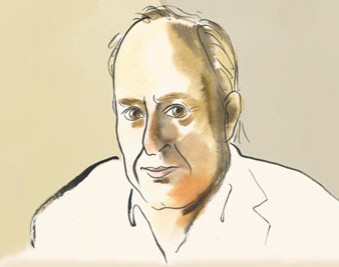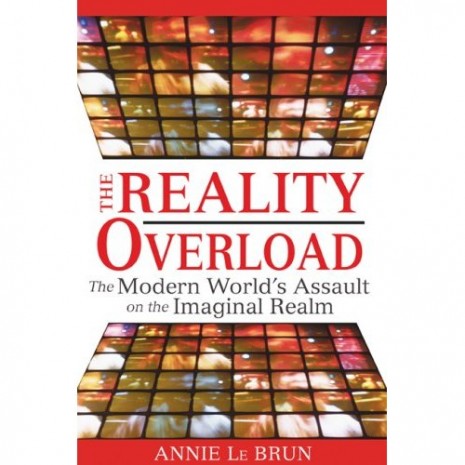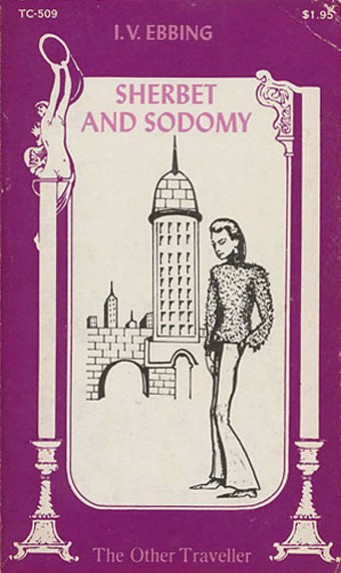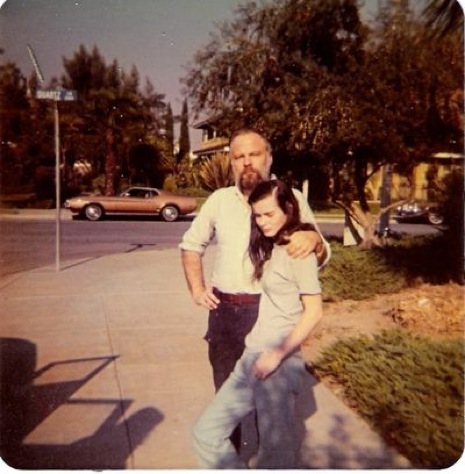_Contes_by_Charles_Perrault_1950_thumb.jpeg)
Is that a Love and Rockets album? No, it’s “Contes de Perrault,” bound in beige calf and black morocco leather by Henri Creuzevault, 1950. Just one of many stupendously good book bindings on display over at BibliOdyssey.
_Contes_by_Charles_Perrault_1950_thumb.jpeg)
Is that a Love and Rockets album? No, it’s “Contes de Perrault,” bound in beige calf and black morocco leather by Henri Creuzevault, 1950. Just one of many stupendously good book bindings on display over at BibliOdyssey.

Over at the Nation, New Weird Wünderkind China Miéville weighs in on the new publication of J. G. Ballard’s complete short stories. The new book spans 1,200 pages of one of the most important authors of our time. What’s to resist?
The publication of any book by J.G. Ballard at this moment—let alone so colossal and career-spanning a volume as The Complete Stories, running to nearly 1,200 pages—is an occurrence that can only be about more than itself. All writers are writers of their time, of course, but Ballard, who after a fight with cancer died in April 2009, feels somehow uniquely, precisely so. This book marks the fact that we are all post-Ballard now: it’s not that we’ve gotten beyond him but rather that we remain ineluctably defined by him. Completists have pointed out that, its title notwithstanding, this volume is not a truly comprehensive collection of all Ballard’s published short fiction. Those few omissions are a disappointment. Nevertheless, they are few, and despite them the book is indispensable.
The volume’s ninety-eight stories (including two written for this edition) are printed in chronological order of publication, which illuminates Ballard’s trajectory. There is something fascinating and poignant about watching various obsessions appear, reappear or come gradually or suddenly into focus: birds, flying machines, ruins, beaches, obscure geometric designs, the often-noted empty swimming pools…
(Nation: China Miéville on J. G. Ballard)

Thanks to Inner Traditions, who sent me this copy of surrealist critic Annie Le Brun’s book The Reality Overload: The Modern World’s Assault on the Imaginal Realm. The book makes the very salient point (one of those ones that seems so obvious in retrospect that I wonder why I didn’t make the connection before—a mark of something being truly important, that it slaps you on the head that hard) that we can link the degradation of the physical world with the degradation of the imaginal one.
A Situationist critique of our current Internet culture, The Reality Overload suggests that we are imagination-impoverished, lost in the endless distraction and meaninglessness of electronic media. That critique has been made before, but linking it to the degradation of the material world is a stroke of genius. What we think, of course, creates the reality we live in. And we tend to think we’re going to get on Facebook after we’re done watching CSI.
Recently I was reading about the Inklings, the discussion group that spawned C. S. Lewis and J. R. R. Tolkien, who would gather in a pub and create fantasy worlds out of the air. Is there any room for this kind of sustained imagination in our world? Hell, even kids these days are playing World of Warcraft instead of Dungeons and Dragons, let alone coming up with their own fantasy worlds. A tailspin of mental stultification… when you have all the information and entertainment you could ever need, the parts of the brain needed for creating those things out of nothing tend to atrophy. Diminishing returns…
An excellent book that makes a much-needed connection. Imagine a world in which we “green” the realm of meaning and fantasy in addition to just the material world!
From the jacket copy:
What underlies the many problems of the modern world—from accelerating rates of extinction and desertification to the increased alienation of the individual—is a reality overload, an increasingly invasive mechanization and homogenization of modern life that glorifies consumption and conformity. This overload has been created from the constant force-feeding of too much information, a phenomenon that dispossesses us of our deepest connections to time, our physical world, and each other.
Annie Le Brun explains that the degradation of the environment mirrors the devastation going on in our minds revealing a link between genetically modified foods and the transformation and decay of our language and communication. There is a direct relationship between the rupture of the great biological balances that govern the planet and the equally devastating rupture in our imaginal realm. The imaginal realm is the home of our dreams and the perceptions that feed our thoughts, individuality, and creativity. Without its influence we are forced to live a drab, alienated lifestyle based on consumption alone. If, as Shakespeare claims, “we are such stuff as dreams are made on,” this theft of our imagination by the reality overload threatens the very foundations of our existence.
(The Reality Overload: The Modern World’s Assault on the Imaginal Realm)

Via Arthur, here’s a great piece on London author Iain Sinclair, whose works I have admired for over ten years now, including ‘White Chappell Scarlet Tracings” and the excellent “London Orbital,” a psychogeographic drift through London.
In London, from the first, I walked. As a film student, newly arrived in the early Sixties, I copied the poet John Clare on his feverish escape from Matthew Allen’s asylum in Epping Forest, when he navigated by lying down to sleep with his head to the north. Skull as compass: all the secret fluids and internal memory-oceans aligned by force of desire. Clare returned, as he thought, to Mary, his first love, his muse; to his heart-place, Helpston, beyond Peterborough, on the edge of the dark fens. My drag was cinema, Bergman seasons in Hampstead, Howard Hawks in Stockwell. Or art: the astonishing Francis Bacon gathering at the old Tate, at Millbank, former prison and panopticon. Bacon’s melting apes were robed like cardinals. Naked men, stitched from photographs, wrestled in glass cages.
Motiveless walking processed the unanchored images that infiltrated dreams of the shadow-belt on either side of the Northern Line. I lodged in West Norwood, a house on a hill, like the one I had left behind in Wales. I wandered through mysterious suburbs to the rooms above the butcher’s shop in Electric Avenue, Brixton, where the school was based. Street markets, I discovered, were a significant part of the substance of this place. Walking was a means of editing a city of free-floating fragments. I composed, privately, epic poems conflating the gilded Byzantium of W.B. Yeats with the slap and strut of Mickey Spillane’s California. London was an impossible relativity of historical periods and superimposed topographies.

Isn’t that cover great? Check out psychedelic-Lovecraftian artist John Coulthart’s blog on this lost gem of early gay lib fic:
We had Shock Headed Peters walking through Sodom yesterday so this novel from 1971 seems like a fitting follow-up. The eye-catching title is no doubt an allusion to Byron’s description of Turkish baths as “marble palaces of sherbet and sodomy”, an epithet which one imagines sent generations of sweet-toothed Uranians trekking to Constantinople throughout the 19th century. I’d seen the cover of this book before on sites which collect the gay fiction of the late Sixties and early Seventies—that doubly-phallic tower makes a good match for the cover of Bugger Boy—but I don’t recall reading a description of the contents before. Homobilia has an extract from the opening page:
My name is Jud. I am eighteen and a half. I was born from the felicitous conjunction of an anthropologist and an ethnologist under the sign of Capricorn. I have been called cute, handsome, pretty, and good-looking; actually, I am beautiful… my nose is classically English, along the line of Reynolds, maybe with a little Caravaggio thrown in around the nostrils. My athletic adolescence on the swimming team at Sterling High has given me a slender muscular body… my eyes are South Pacific blue. I have read Hesiod. I masturbate regularly. I have no concept of money or its value. I try to keep my farts silent. I have juvenile down on my ass. I have read the minor Elizabethan poets and I have looked at my anal sphincter in the mirror. Until last week I considered myself heterosexual…

While I recognize that linking from Letters of Note has become dreadfully gauche (I think every blogger in the world thought they were the first person to discover and re-link from the site, including me), I couldn’t resist this Harlan Ellison broadside. This is light on the Ellison-Reams-Publisher meter. (My favorite story is of him mailing dozens of bricks COD to a publisher until they took their ads out of his book!)
HARLAN ELLISON
12 February 92
Dear Amy:
You may use this on Connie’s new book. In full, no ellipses, no altering for any edition. And send me a copy of the book, please. And warn the troll drones in your art and publicity departments that if they fuck around with the quote, change it or alter it for a meaning not intended, I will come and find them and kill them so dead I’ll murder their ancestors!
Charmingly,
(Signed)
“The writing of Connie Willis is irresistable. Clever, cunning, and capable of tantalizing the most demanding reader.”
HARLAN ELLISON

The Guardian reports on literature’s weirdest drugs, starting from that beaten-like-a-dead-guy-on-Horse motherlode Naked Lunch.
News of a documentary about the life of William Burroughs sent me scurrying – giant bug-style – back to his most celebrated work, Naked Lunch. Actually, it was more of a tentative crawl, because this was and remains the most difficult book I’ve ever encountered.
Maybe I’m about to commit hara kiri on my intellectual/literary credibility – such as it is – but I must confess: I find Naked Lunch pretty much unreadable. And not in the Dan Brown/misery lit/sleb memoir sense: I could read those if I had to, I just wouldn’t enjoy it.
But Naked Lunch, my God … It’s like someone swallowed the diaries of a hallucinating lunatic and vomited the resultant mess into your ears, stomach bile and all. While I can admit Burroughs was an important and seminal (pun probably not intended) writer, I can’t read Naked Lunch without feeling queasy. And I can’t finish it.
Lord knows I’ve tried. I wrestled with it again just this week. But once more this slim volume defeated me, forcing me to pound the mat and yell, “No more!” I felt as exhausted and brain-fried as someone coming out the far end of a two-week bender, but without any of the pleasurable memories.
Each time I get about halfway through, battling each disconnected sentence, all that disturbing weirdness, trying to mentally force some kind of shape onto these brilliant, demented ramblings, and then … I don’t know. I run out of energy, maybe. Or interest. Or time. Or willingness to engage with the most grotesque and unsettling imagery this side of a prog rock album covers compendium. (The specific line this time round, the literary straw that broke my camel’s back, was: “Mold odors of atrophied testicles quilted his body in a fuzzy grey fog …” I’m not sure which disturbs me more: the horrible vision conjured up, or the annoying spelling of “mould” and “odours”.)

Alejandro Jodorowsky—well known to readers of this site as the director of El Topo, Santa Sangre, The Holy Mountain and several other film reels of symbolic dementia, is also one of the world’s most recognized experts on the Tarot, which he has studied as a tool of self-exploration and transformation for almost 60 years. Destiny Books just released the English translation of his 500-page magnum opus The Way of Tarot, which summarizes his work with the cards. Interestingly, Jodorowsky works with the old European deck—the Marseilles Tarot—which far predates the more commonly used Rider-Waite or Thoth packs. Looks like absolutely essential reading for fans of the man and the tarot alike.
From the promo copy:
Alejandro Jodorowsky’s profound study of the Tarot, which began in the early 1950s, reveals it to be far more than a simple divination device. The Tarot is first and foremost a powerful instrument of self-knowledge and a representation of the structure of the soul.
The Way of Tarot shows that the entire deck is structured like a temple, or a mandala, which is both an image of the world and a representation of the divine. The authors use the sacred art of the original Marseille Tarot—created during a time of religious tolerance in the 11th century—to reconnect with the roots of the Tarot’s Western esoteric wisdom. They explain that the Tarot is a “nomadic cathedral” whose parts—the 78 cards or “arcana”—should always be viewed with an awareness of the whole structure. This understanding is essential to fully grasp the Tarot’s hermetic symbolism.
The authors explore the secret associations behind the hierarchy of the cards and the correspondences between the suits and energies within human beings. Each description of the Major Arcana includes key word summaries, symbolic meanings, traditional interpretations, and a section where the card speaks for itself. Jodorowsky and Costa then take the art of reading the Tarot to a depth never before possible. Using their work with Tarology, a new psychological approach that uses the symbolism and optical language of the Tarot to create a mirror image of the personality, they offer a powerful tool for self-realization, creativity, and healing.

Have you been keeping up with Scott Timberg’s excellent multi-part article about Philip K. Dick’s time spent in the most conservative county—that would be the O.C.—in America? From part 3:
Orange County, he wrote, was far to the south of us, an area so reactionary to us that in Berkeley it seemed like a phantom land, made of the mists of dire nightmare Orange County, which no one in Berkeley had ever actually seen, was the fantasy at the other end of the world, Berkeley opposite.
Kidding aside, there were certainly times when suburban SoCal, and life as a married father, didn’t satisfy him. I hadn’t realized before how [expletive] dumb and dull and futile and empty middle-class life is, he wrote in a 1975 letter. I have gone from the gutter (circa 1971) to the plastic container.
Dick’s supposed paranoia didn’t wane during these years: As often happened, the culture and American history caught up with him. Dick was fond of pointing out that the Watergate trials validated his obsession with conspiracy. Tessa, who is hoping to run for Congress as a Libertarian, says that his distrust of the government and fear of the police state increased during his decade in Southern California.
Lethem, editor of Dick’s Library of America volumes, called this a period where he seems less grounded in place. From the evidence of Dick’s work, Lethem said, it’s a time of very strong alienation from any real environment it’s about Disneyland, about condos where you park your car under the building, where you barely get to know your neighbors. It was about Nixon. It’s almost like Dick was a spy in Orange County a mole within the culture.
Philip K. Dick, an uneasy spy inside 1970s suburbia (Hero Complex/Los Angeles Times)

Sad to hear this:
Howard Zinn, an author, teacher and political activist whose leftist “A People’s History of the United States” became a million-selling alternative to mainstream texts and a favourite of such celebrities as Bruce Springsteen and Ben Affleck, died Wednesday. He was 87.
Zinn died of a heart attack in Santa Monica, California, daughter Myla Kabat-Zinn said. The historian was a resident of Auburndale, Massachusetts.
Howard Zinn, author of ‘People’s History’ and left-wing historian, dies at 87 in California